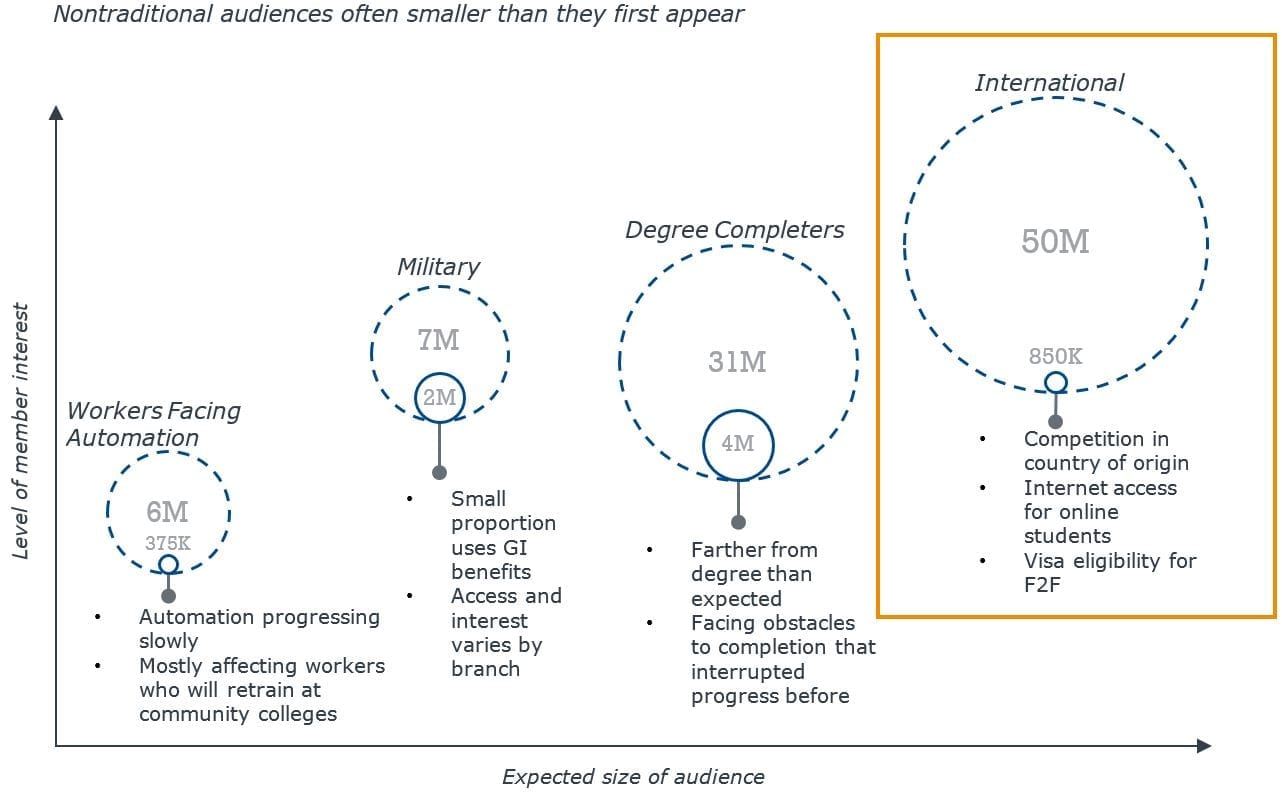As domestic enrollments stagnate or decline in many COE units, institutions are looking abroad for new online student audiences.
Finding and recruiting online international students requires extensive on-ground networks and close alignment to local economic and student needs. In addition, the potential market is much smaller than commonly thought, which further complicates international online expansion.
International students have more options to study at local institutions, securing recognized degrees on accessible campuses. Physical access is particularly attractive if students have limited internet access, whether through unreliable technology or governmental restrictions. If students are able to secure a visa and travel to U.S. campuses, they typically prefer the experience of attending school abroad and then must complete the vast majority of their coursework in person to retain their visas. Students who cannot travel to the U.S. then again often prefer locally based institutions.

To expand or strengthen your current international online offerings in the face of these challenges, consider the following three questions.
1. Can our programs meet local labor market needs?
The combination of developing education markets abroad and increased American interest in online international students has created high competition for those students’ enrollments. English language offerings or American-branded programs usually fail to stand out in this crowded market. Instead, successful programs meet three main criteria:
- Audience available in the market matches the program’s target population (e.g., adult graduate students)
- Program addresses a local labor market shortage (e.g., niche engineering degrees)
- Program offers distinguishing characteristics such as strong institutional reputation, practitioner-instructors, etc.
2. Do we have access to an on-ground network in the target country?
Without on-ground networks, American institutions often struggle to attract prospective international students solely through digital recruitment. On-ground networks ensure institutions achieve local familiarity and legitimacy, plus in some cases even provide a supportive community for online students despite their distance from the institution. Universities’ potential on-ground networks include:
- Arrangements with local partner universities
- Affiliations with religious organizations
- Partnerships with U.S. military establishments
3. Can prospective students easily access our educational content?
When identifying potential international audiences, seek countries that meet the following criteria:
- Significant English-speaking populations: Establish a minimum TOEFL score for students who do not speak English as a first language to ensure applicants will be able to understand coursework
- Upper-middle income: Countries with a Gross National Income per capita above $8,470 as reported by the World Bank indicate upper-middle income status. These upper-middle income countries offer institutions the best potential to find audiences able to afford online American tuition
- Permitted access to U.S. universities online: Of the top 25 universities in terms of enrolling the most international students, 68% had their admissions content blocked within China
Pivot back to domestic enrollments
If online international recruitment isn’t right for your unit, use COE Forum’s research on Competing on Students Outcomes in your regional market to increase domestic student enrollments.